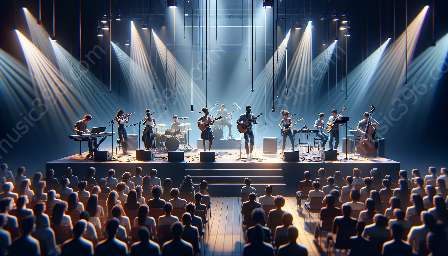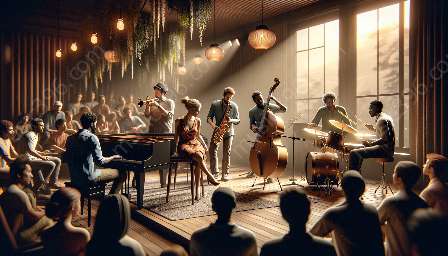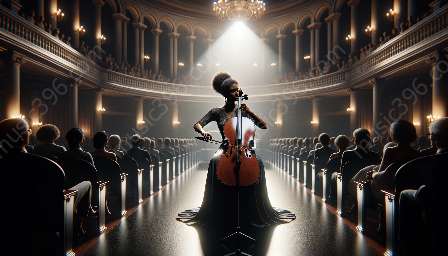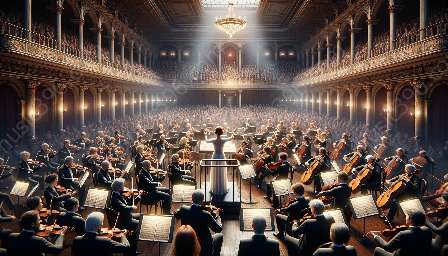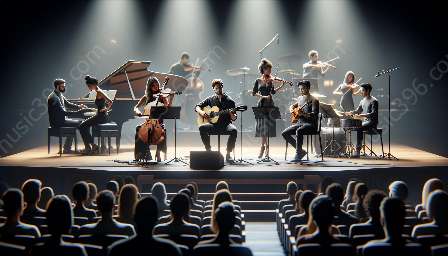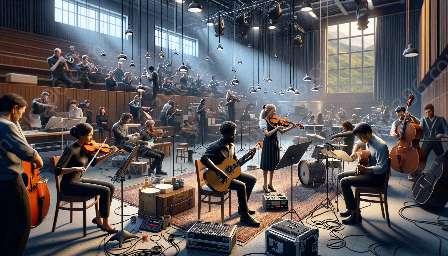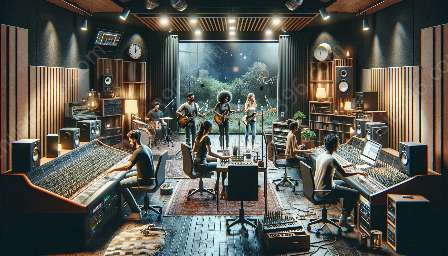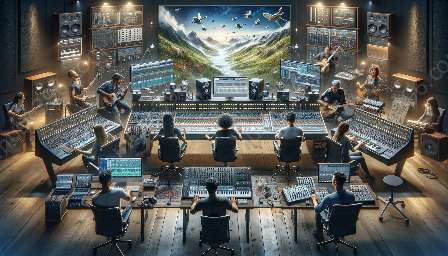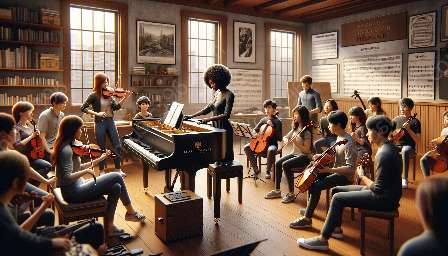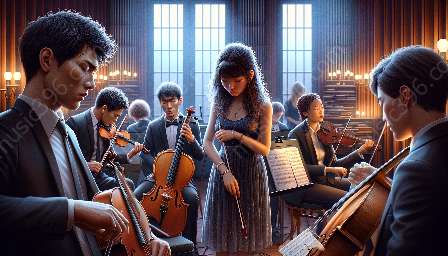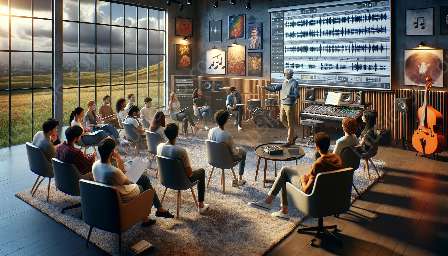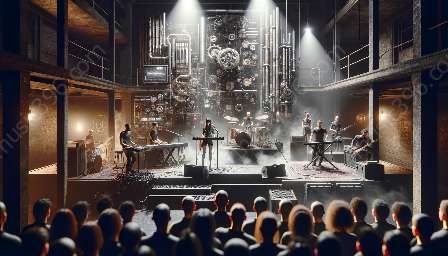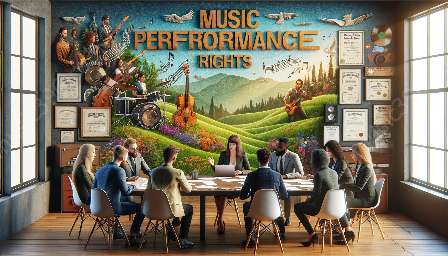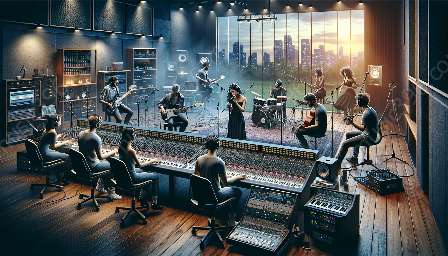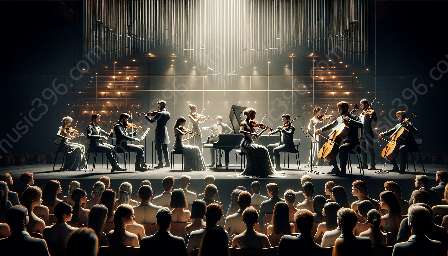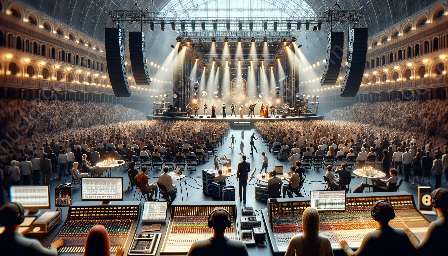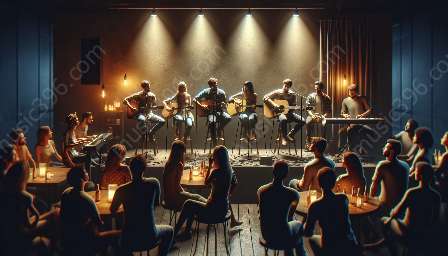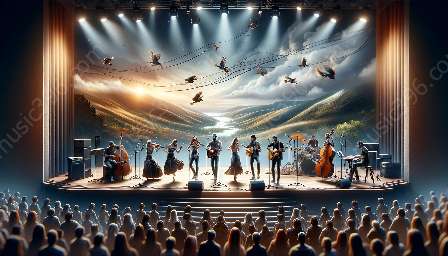Introduction
Music performance is an art form that offers a unique opportunity for collaboration and communication. This topic cluster explores the different collaborative approaches to music performance, ranging from amateur to professional levels. We will delve into the impact of collaborative performance on music, the skills and dynamics involved in music performance, and the distinctions between amateur and professional music performance.
Collaborative Music Performance
Collaborative music performance involves a group of musicians working together to create a cohesive and unified musical experience. This can take many forms, including ensemble performances, chamber music, orchestral collaborations, and more. The collaborative nature of music performance allows for an exchange of ideas, creativity, and expression, leading to enriching musical experiences for both performers and audiences.
At the amateur level, collaborative music performance often involves community groups, school bands, and informal gatherings of musicians. These amateur collaborations provide a platform for aspiring musicians to develop their skills, learn from one another, and share their love of music with their communities.
On the other hand, professional music performance involves seasoned musicians who have dedicated their careers to mastering their craft. Professional collaborations can range from orchestral performances in prestigious concert halls to studio recordings with renowned artists. These collaborations require a high level of expertise, precision, and discipline to achieve a polished and professional outcome.
Impact of Collaboration on Music
Collaborative performance has a profound impact on music, shaping its evolution and fostering artistic growth. When musicians come together to perform collaboratively, they engage in a dialogue of musical ideas, interpretations, and emotions. This interaction not only enhances the quality of the performance but also contributes to the development of the musical repertoire and the cultural significance of music.
For amateur musicians, collaborative performance can be a transformative experience, providing opportunities for personal growth, teamwork, and self-expression. Amateur musicians often form close-knit communities through collaborative music-making, creating a supportive environment for learning and creativity.
Professional collaborations, on the other hand, contribute to the advancement of musical excellence and innovation. Through collaborative projects, professional musicians push the boundaries of musical interpretation, technical prowess, and artistic expression, influencing the broader landscape of music performance and composition.
Skills and Dynamics of Music Performance
Both amateur and professional music performance require a set of skills and dynamics that are essential for successful collaborations. These include musical proficiency, communication, teamwork, adaptability, and leadership.
Amateur musicians often develop a range of skills through collaborative performance, such as listening and responding to fellow musicians, following a conductor's directions, and collectively interpreting musical scores. These experiences lay the foundation for future musical endeavors and contribute to the overall enjoyment of music-making.
Professional musicians, on the other hand, bring a high level of technical expertise and artistic sensitivity to collaborative performances. They possess the ability to communicate and synchronize their musical expression with precision, often working under demanding performance schedules and artistic expectations.
Amateur vs. Professional Music Performance
The distinction between amateur and professional music performance lies in the level of dedication, training, and commitment to the craft. While amateur musicians perform for personal enjoyment and enrichment, professional musicians make a livelihood from their musical endeavors. This contrast impacts the depth of musical skill, the level of performance experience, and the overall artistic aspirations of the musicians.
Amateur music performance emphasizes the joy of making music with others, often in a relaxed and informal setting. It provides an avenue for self-expression, creative exploration, and social interaction, catering to a wide range of musical interests and abilities.
Professional music performance, on the other hand, demands a rigorous approach to musical discipline and artistic refinement. Professional musicians undergo extensive training, pursue advanced degrees, and commit to continuous professional development to excel in their chosen field. Their performances are often characterized by a high level of technical mastery, interpretative depth, and a dedication to delivering exceptional musical experiences.
Conclusion
Collaborative approaches to music performance exemplify the power of human connection, creativity, and shared passion. Whether at the amateur or professional level, collaborative music performance enriches the cultural fabric of society, fosters personal growth, and perpetuates the legacy of musical traditions. By embracing the collaborative spirit of music performance, musicians of all backgrounds can cultivate meaningful relationships, expand the boundaries of their musical abilities, and leave a lasting impact on the world of music.
Creative Commons CC BY-ND https://creativecommons.org/licenses/by-nd/4.0/


